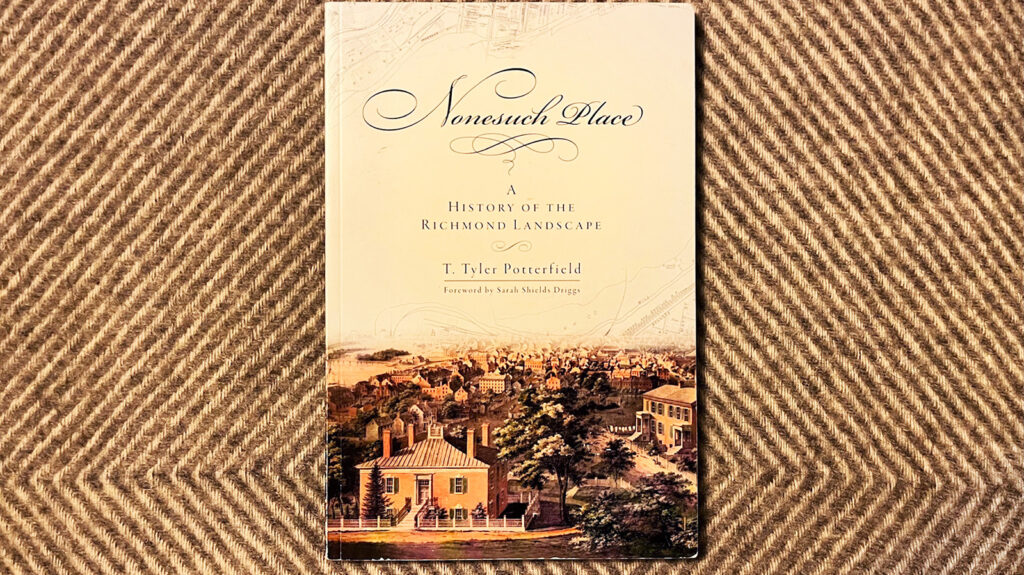T. Tyler Potterfield
2009
The History Press
157 pages
All cities are shaped by the landscapes on which they are built. The great harbors of New York and Hong Kong made those cities into the hubs of international trade we know today. Istanbul’s position on the Bosporus strait has made it a meeting point of cultures for nearly three millenia. Richmond’s story is less well known, but the landscape’s influence over its development is no less profound. The proof of that assertion can be found in the form of a slim and straightforward book by urban planner Tyler Potterfield entitled “Nonesuch Place: A History of the Richmond Landscape.”
The title is a reference to the explorer John Smith’s famous description of the seat of the Powhatan Confederacy. From the site that would become Richmond, Chief Powhatan presided over a vast territory. This location at the fall line of the James–the uppermost navigable point of the river–made Richmond a natural point of trade and transit. The rapids which begin at present day 14th street still mark this transition.
From this starting point, Potterfield’s book charts the development of the city through four centuries, explaining how its hills, valleys, watercourses, and flora guided successive waves of urban expansion. The so-called ‘amphitheater of hills’ that stud the river’s northern edge are given special attention as both physical and psychological landmarks of the city. Potterfield also explains how differing attitudes toward urban development influenced how the landscape was understood and appropriated. In the Romantic era of the late 19th century, Hollywood Cemetery and other picturesque landscapes were built at prominent locations. In the 20th century, the city expanded rapidly, converting rural and wilderness areas into suburbs like Windsor Farms.
“Nonesuch Place” is a short and accessibly-written history. It also asks the reader to consider how different attitudes toward the landscape might have yielded a more just, beautiful, and ecologically sound city than we live in today. This is a question that preoccupied Potterfield in his own career as a planner for the City of Richmond. He devoted many years to the improvement of Richmond before his death in 2014, helping to bring about change that enhanced urban life while respecting and accentuating the land on which it relies.
In 2016, the T. Tyler Potterfield Memorial Bridge, a pedestrian bridge that spans from Manchester to Downtown Richmond, was dedicated in his memory. The bridge, and his book, are among the many fruits of his service to the city.
DOK


Write a Comment